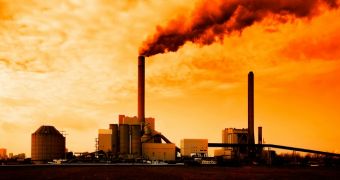According to a new paper in the journal Environmental Science and Technology, it is possible that China's industrial nitrous oxide emissions will more than triple by 2020. Should this happen, the ozone layer will be greatly affected, and climate change and global warming will be more difficult to limit.
In said report, scientists with the Peking University in Beijing detail that, between 1990 and 2012, China's nitrous oxide emissions linked to the production of industrial chemicals upped from 5.07 gigagrams to an impressive 174 gigagrams per year.
The researchers say that, under a business-as-usual scenario, they could increase to as much as 561 gigagrams per year by 2020. Should they reach this value, they would be about five times greater than the nitrous oxide emissions documented in the United States annually.
“The results show that from 1990 to 2012, industrial N2O emissions in China grew by some 37-fold from 5.07 to 174 Gg,” the scientists write in the Abstract to their paper in the journal Environmental Science and Technology.
“From 2012 to 2020, the projected emissions are expected to continue growing rapidly from 174 to 561 Gg under current policies and assuming no additional mitigation measures,” the Peking University researchers go on to say.
Environmental Health News informs that, according to previous studies, nitrous oxide is a dangerous ozone-depleting compound. Besides, it has been documented to be a fairly potent greenhouse gas. Hence, having more of it creep into our planet's atmosphere is bound to upset both the ozone layer and global climate.
By the looks of it, China owes its impressive industrial nitrous oxide emissions to the fact that it is currently a major producer of nitric acid, which serves to make fertilizers, and adipic acid, which is used to make nylon.
Thus, researchers say that nitrous oxide is a byproduct of nitric acid and adipic acid production. Of these two fields of work, adipic acid production is believed to account for almost 80% of China's emissions of said ozone-depleting compound and potent greenhouse gas.
In light of these findings, the Peking University specialists recommend that high officials move to institute new policies intended to limit nitrous oxide emissions originating from the production of industrial chemicals. These policies should involve requiring companies in the chemicals industry to opt for cleaner technologies.
“Adipic acid production, the major industrial emission source, contributes nearly 80% of the industrial N2O emissions, and represents about 96.2% of the industrial mitigation potential. However, the mitigation will not happen without implementing effective policies and regulatory programs,” the researchers stress.

 14 DAY TRIAL //
14 DAY TRIAL //